By Bart Ross | Recovery & Alumni Services Coordinator
Alcoholics Anonymous (AA) was in its infancy when WWII erupted in 1941. Thousands of men volunteered or were drafted for the war. The home AA office in New York, which later became the General Service Office (GSO) and today serves AA groups in the U.S. and Canada as a clearinghouse, had concerns whether the war would be too much for the newly sober members.
Thankfully, for AA members serving on the home-front, the war didn’t prove to be too much. Likewise, AA members serving in the war oversees thrived because the principles of AA kept them grounded and focused when the world around them seemed full of destruction.
If you or a loved one need help, call our admissions team today at 561-841-1033.These successes proved that the AA principles could and will work in all our affairs.
In June 1944, World War II was nearing an end. Of the approximately 300 AA members in the U.S. armed forces at that time, many lived in the New York metropolitan area. The first issue of the AA “Grapevine” was published that same month and for every month since. The Grapevine was created by six members from the New York area with the Blessing of Bill W. A copy was sent to every AA group and all the AA members in the U.S. armed forces overseas. An entire page entitled “Mail Call for All AA in the Armed Forces” was devoted to letters from these members. They called the Grapevine their “Meeting in Print,” a title that stuck and remains today.
When WWII ended in 1945, the AA members started meetings where they were stationed. AA in Europe took root due in part to the military. The new AA was started by military members who invited locals to attend.
Today these meetings are conducted entirely by locals in their host nation languages.
In 2001, AA published its fourth edition of the Big Book. It really didn’t have an impact on me when we were told it would be printed. Those of you who know me, know I only use the first 164 pages, and I’m confident AA will never change that portion of the book.
When the new edition was released, two things concerned me. The first thing was in the dust jacket. It read, “The basic text, pages 1-164, which had been the foundation of recovery for so many alcoholics remained and remains unchanged.” This statement was quickly removed from the second printing.
My second concern was the modem-to-modem term. Here’s the quote:
“While our literature has preserved the integrity of the AA message, sweeping changes in society as a whole are reflected in new customs and practices within the Fellowship. Taking advantage of technological advances, for example, AA members with computers can participate in meetings online, sharing with fellow alcoholics across the country or around the world. In any meeting, anywhere, AA’s share experience, strength, and hope with each other, to stay sober and help other alcoholics. Modem-to-modem or face-to-face, AAs speak the language of the heart in all its power and simplicity.” (Foreword to the fourth edition of the Big Book, XXIV)
Let me explain!
My experience with 12-Step recovery is that it’s a “language of the heart.” This language is mostly spoken through action, like a simple pat on the back, a shake of the hand, an offering of a cup of coffee, and the opportunity to look into the eyes of someone who can’t look back into your eyes yet. These actions are so important to me while carrying a message of depth and weight.
So, I was unsure how modem-to-modem could work until today as the world meets with COVID-19. Watching this pandemic unfold in recovery life has been… Well, I’m not entirely sure yet. I’m taking it one day at a time and experiencing it as it continues to unfold.
Initially, it meant no personal contact at meetings, so newcomers were unable to have that critical personal contact. Meeting halls like my own were shut down, due to not enough groups being able to pay rent. That being said, there are fantastic things I have witnessed so far. Modem-to modem has become a vital part of recovery now.
(Yup, I was wrong again.)
Listening to the excitement of a newcomer from Florida who went to meetings in Australia, England, and New York this week is pretty cool. Many people I’ve spoken with have realized how much they were leaning on meetings and how little they were relying on their Higher Power. Going on a Zoom meeting with someone one-day sober or just coming home from treatment and hearing them say, “Hello, I’m new,” and watching phone numbers jump onto the screen for them is incredible.
Personally, I can’t wait for in-person meetings, but modem-to-modem will always have a place in this recovered alcoholic’s life as well. It’s evident that in God’s world, good can come out of anything if we keep an open mind.
Let me know your experiences with the current recovery. I’d love to read about it. You can shoot me an email at bross@originsrecovery.com.
Hanley Center is a well-known care provider offering a range of treatment programs targeting the recovery from substance use, mental health issues, and beyond. Our primary mission is to provide a clear path to a life of healing and restoration. We offer renowned clinical care and have the compassion and professional expertise to guide you toward lasting recovery.
For information on our programs, call us today: 561-841-1033.




